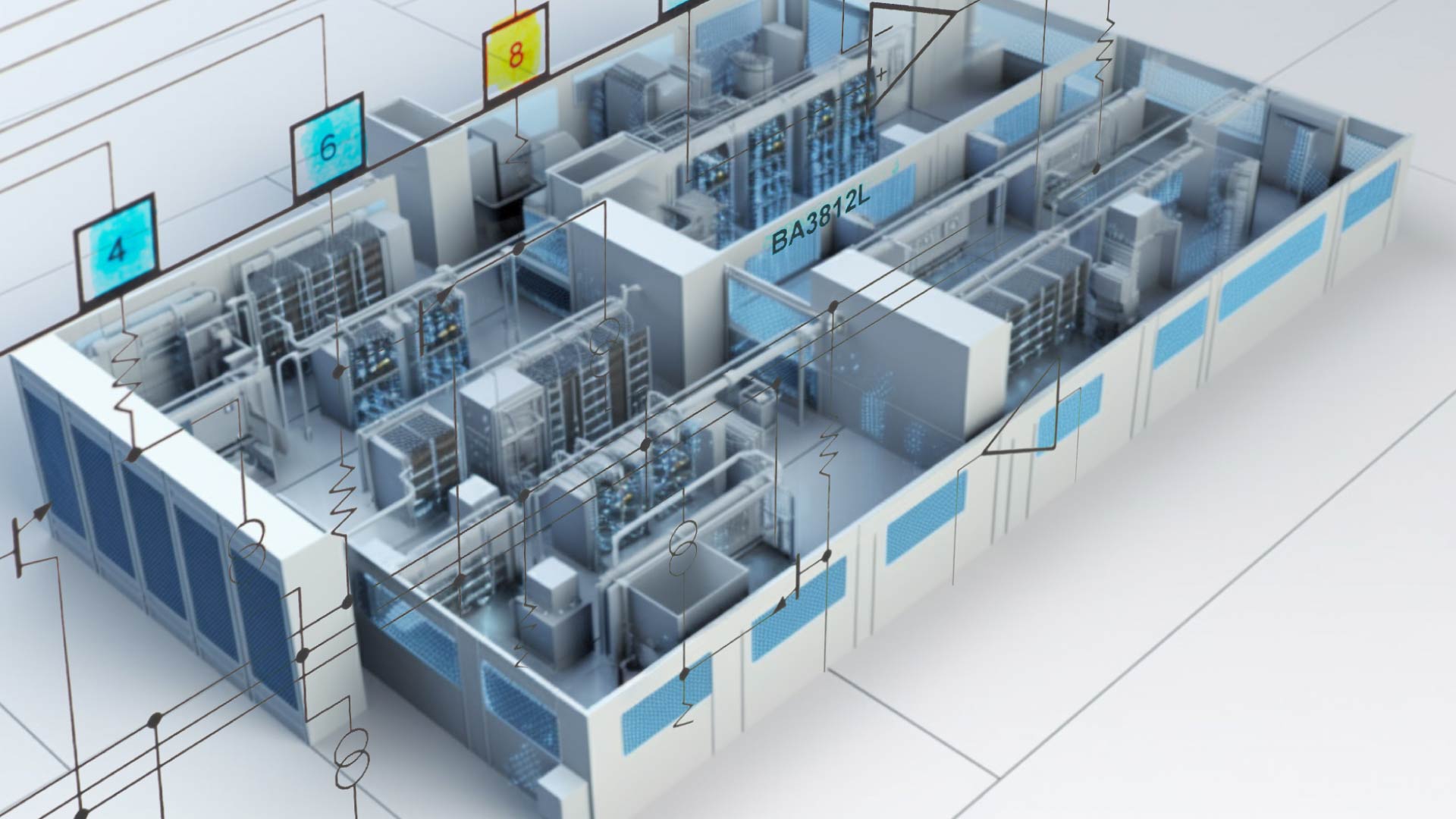Also known as an SLD or one-line diagram, a single-line diagram is a high-level schematic diagram showing data centre power consumption, basically a simplified roadmap of your data centre’s electrical system.
Visually, a SLD just looks like an array of symbols and lines which represent the nodes and connections in your electrical system. The power source will typically appear at the top of the diagram so the power path can be followed down and redundant power paths can be seen side by side.

But why are we talking about a diagram? Well, it’s a useful data centre power management troubleshooting tool that allows you to visualise and monitor your power distribution system, which is vital for future testing and maintenance.
Table of Contents
ToggleWhat Can Single-Line Diagrams Do For Data Centres?
Like a blueprint, data centre managers can see at a glance every node and every electrical connection of their data centre power design within a single document, allowing for power system reliability, compliance with regulations such as NFPA-70E and improvements in staff safety.
On occasion, data centres managers will decide that the need to update electrical installation diagrams is not important. That is, until they encounter real problems and devastating losses, all down to an inaccurate overview of their data centre power design.
Data centre power monitoring is easily assisted with a SLD that clearly shows the distribution of power in order to improve power planning, ensure redundancy and reduce power outages – absolutely critical when it comes to conserving energy and being environmentally friendly.
But to really optimise the benefits of a SLD, to get live tracking, automated documents, easy power management and improved effectiveness, all in one place, transforming your entire data centre space, you’ll need Assetspire’s state of the art DCIM.
But first, let’s delve into the details of what standalone SLDs consist of and the implications for data centres and power planning.
Which Data Centre Equipment is Included in a Single-Line Diagram?
Starting at the top with the power source down to the floor power distribution units, SLDs clearly show redundant power paths. The nodes shown usually include:
- Utility feed:The main power source from the data centre.
- Generators and fuel tanks:Deliver backup power during an unexpected outage.
- Transformers:Convert electrical power from one voltage or current to another.
- Switchgears: Control, protect and isolate electrical equipment.
- Switchboards:Divide and distribute power into branch circuits.
- Automatic transfer switches (ATS):Switch to a backup power source when there is an outage.
- Uninterruptible power supply (UPS):Provide emergency power during an outage.
- Floor power distribution units (PDUs):Transform raw power into lower capacity feeds that lead into rack PDUs and busways or remote power panels.
- DC power plants:Provide uninterrupted DC power.
- DC bays: Distribute individual loads from the DC power plant to equipment downstream.
A Breakdown of the Features and Benefits of Single-Line Diagrams
Essential in data centre power management and planning, SLDs offer a number of benefits:
- Up-to-date:Schematic of your electrical infrastructure following a site survey and data collection conducted by trained technicians.
- Blueprint: Clear document showing your data centre power design, electrical distribution system layout
- Future testing:Update of your existing schematic to get current documentation for better future testing.
- Data centre power design:A simple and clear depiction of your power distribution system layout and design.
- Redundancy:Discover redundant power paths to ensure server and power system reliability.
- Power planning:Simplify planning, troubleshooting and efficiency of maintenance.
- Compliance:Simplified compliance to meet codes and regulations such as NFPA-70E.
- Fault-tolerance:In line with EN50600 and TIA-942-A standards
- Safety: Protect staff and maintain safe operations within your facility to keep in line with hazardous energy control programs and LOTO (log-out take-out) practices.
Enhance the Benefits of Single-Line Diagrams with DCIM
Usually a manual process, creating and maintaining SLDs can be time consuming. And most data centres are continuously adding, removing or changing electrical equipment, meaning issues may not become apparent until the system becomes overloaded and problems begin.
Optimised with Assetspire’s DCIM, keeping your SLD up to date is made dramatically simpler with proper protection and system reliability while remaining compliant with industry standards. The resulting improved accuracy of SLDs
With DCIM you get:
- Enhanced safety: Monitoring data centre power consumption via reviews, surveys and checks can identify potential risks before they become problems.
- Improved effectiveness:Up to date SLD of your electrical distribution plan improves critical response plans.
- Compliance assured:Remain compliant with NFPA-70E and other code regulations with constantly updated SLDs.
- Optimised power performance: More effective future engineering services, which enable performance optimization, are possible when you have accurate system information View Diagram
- Automated: An always accurate SLD is automatically generated and updated with any changes.
- Easy data centre power management: Overlay your SLD with real time power data, so mapping your infrastructure and power planning decisions are made easy.
- Live tracking: Understand current capacitydata, track voltage, current, power rating and more, all in real time.
- Modernised: DCIM generated SLDS are easily navigable, can be edited and printed.
- One central platform: Track all of your assetson a user friendly platform accessible on an app from any location.
Let our smart software do all the hard work for you, so creating traditional SLDs is a thing of the past and you can reap the benefits of an accurate and optimised electrical system.
Transform your current data centre power management and get a true understanding of your real time power data. Try next-gen DCIM for yourself with our free demo.




